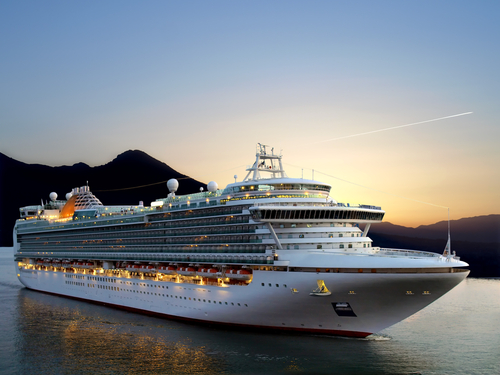 |
These new technologies are required for ships covered by the International Marine Organization’s (IMO) amended regulations known as Annex VI to the International Convention for the Prevention of Pollution from Ships (MARPOL), which designated specified “portions of U.S., Canadian and French waters as an Emission Control Area (ECA).” In the United States, the ECA and Annex VI are implemented via regulations adopted under the Act to Prevent Pollution from Ships (APPS).
The goal of the ECA is to reduce ships’ emissions of nitrogen oxides (NOx), sulfur oxides (SOx), and fine particulate matter (PM-2.5) in coastal waters of North America. According to the EPA, by 2020, compliance with the ECA will reduce NOx emissions by 320,000 tons (23 percent), SOx by 920,000 tons (86 percent), and PM-2.5 by 90,000 tons (74 percent). Without the ECA emissions limits, the EPA estimated that by 2030, “NOx emissions would more than double … while annual PM-2.5 emissions would be expected to almost triple…” The North American ECA “extends up to 200 nautical miles from coasts of the United States, Canada and the French territories,” including portions of Alaska, Hawaii, and the U.S. Caribbean.
Forget expensive calls to lawyers and consultants. With Enviro.BLR.com, you get instant access, 24/7. Try it out today and get an the 2013 EHS Salary Guide, absolutely free. Download Now.
In a letter to one of the world’s largest vacation cruise lines, the EPA and the USCG reached an agreement in principle concerning the company’s proposal for a trial program that will “exempt 32 (of its) ships from the fuel sulfur requirements of the North American ECAs,” which mandate that ships use more costly lower-sulfur fuel (1,000 ppm), or, as an alternative, “equip their vessels with exhaust gas cleaning devices (“scrubbers”)” to remove sulfur emissions.
The cruise line’s trial program will develop and install scrubber systems “that will meet or exceed sulfur emission levels” on 32 of its vessels operating in the North American ECA. According to the EPA, the new emissions control systems will “combine the use of SOx scrubbers with diesel particulate filters–thus combining technologies well known in the power plant and automotive sectors, but not previously used on a marine vessel.”
The trial program will run in phases and will be performed in dry dock beginning with 9 ships in 2014, 16 ships in 2015, and 7 ships in 2016. In addition, during the exemption period, the company will use “shore power or marine gas oil with a fuel content no greater than 0.1 percent” while at berth.
Everything You Need for Environmental Compliance
Enviro.BLR.com puts everything you need at your fingertips, including practical RCRA, CAA, CWA, hazardous waste regulatory analysis and activity, news, and compliance tools. Try it at no cost or risk and get a FREE report.
The costs to industry for meeting the lower emissions requirements under the ECA will be “on par” with similar costs for land-based sources, according to the EPA. “We estimate the total costs of improving the emissions of ships operating in the ECA from current performance (2010) to ECA standards will be approximately $3.2 billion in 2020.” The EPA estimates economic impacts of compliance to be “modest,” with an increase of approximately 3 percent (or about $18 for a 20-foot container) for a vessel operating in the ECA on a route of 1,700 miles.
The EPA anticipates significant health and welfare benefits resulting from the lower emissions to include improved air quality in coastal zones as well as “hundreds of miles inland to reach nonattainment areas such as Nevada, Tennessee and Pennsylvania.” Moreover, the EPA concludes that improved air quality will result in “preventing between 5,000 and 14,000 premature deaths, 3,800 emergency room visits, and 4,900,000 cases of acute respiratory symptoms in 2020.”
The EPA and the USCG will continue discussions with other marine companies to develop similar technologies within the flexibility established by the North American ECA and MARPOL Appendix VI.
Need Environmental Compliance Help? You Need Enviro.BLR.com.
Look at all you get with your subscription:
- State-specific regulatory analysis. Plain-English summaries of the differences between state and federal EPA regulations save you headaches.
- Continuous regulatory updates. Daily final regulations, proposed regulations and notices from the feds, all 50 states, and the District of Columbia. More than 500 posts each month.
- Hundreds of compliance and training tools. Save work, time, and money with pre-written sample plans, training meetings, checklists, forms, and guidance documents
- Environmental best practice and white papers. BLR’s environmental editors bring you compliance tips and advice from leading practitioners.
- "Site Navigator," a powerful, easy-to-use search. Find the answers you need in seconds by jurisdiction, topic, or type of document.
- 2 weekly ezines. Exclusive regulatory email alerts to your desktop keep you on top of the latest EPA developments, both federal and YOUR state.
- 3-Day Expert Answers. Relax. Our editors guarantee a 3-day, personalized response to your questions.
Click here to take a free trial, and for a limited time, also receive a free 2013 EHS Guide. Download Now.
